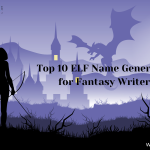Mastering the art of narrative creation is a timeless and crucial talent in the ever-changing world of storytelling. As we approach 2024, the world of literature and entertainment continues to change, providing new problems as well as great opportunities for storytellers. Understanding how to successfully plot a novel/story is critical to attracting and retaining readers’ interest throughout the narrative, whether you’re an ambitious writer just starting out or a seasoned author looking to improve your craft.
In this blog article, we will go into the core principles of story structuring in 2024, delivering practical advice and important insights to aid you in producing narratives that profoundly engage with current audiences.
Plotting a novel in the modern day necessitates an understanding of readers’ changing interests and expectations. It takes a careful blend of timeless narrative ideas and modern ways to fascinate current audiences. We will walk you through the process of creating fascinating tales that attract readers from the first page and keep them interested until the last page by covering the basic components of plot development.
Read: Learn How to Write a Book and Get it Published in the UK: Complete Guide
This blog article will go over important subjects like the significance of a great concept that grabs readers attention and sets the foundation for an engaging storyline.
We’ll also look at the importance of well-defined characters who propel the plot forward with their ambitions, conflicts, and transformations. In addition, we will go through the importance of structure and pacing, highlighting tactics that will guarantee your tale flows smoothly and keeps readers engaged.
We will look at how conflict and stakes may increase tension and emotional engagement in both the characters and the readers. Furthermore, we will look at how subplots and layered narratives may help you increase the depth and complexity of your storytelling.
Finally, we will discuss the art of foreshadowing and plot twists, which add excitement and surprise to your story, as well as the significance of a satisfying finish that gives readers a feeling of closure while leaving space for interpretation.
So, here’s a list of 8 steps to create an amazing & engaging story plot in 2024:
- Know Your Audience and Genre
- Start with a Strong Premise
- Develop Well-Defined Characters
- Structure and Pace
- Conflict and Stakes
- Subplots and Layered Narratives
- Foreshadowing and Plot Twists
- Resolution and Closure
- Know Your Audience and Genre
Understanding your target audience and the genre you are writing in is crucial when plotting a story. Conduct thorough research to gain insights into the demographics, characteristics, and preferences of your readers. Consider factors such as age, gender, interests, and reading habits to create a story that resonates with them on a deeper level. Simultaneously, familiarise yourself with the conventions and expectations of your chosen genre. Recognise the unique tropes, themes, and narrative structures that define it. Incorporating these elements into your plot will ensure it aligns with readers’ expectations. Striking a balance between meeting audience preferences and infusing fresh ideas will help your story stand out. Engage with beta readers, participate in writing communities, or conduct surveys to gather feedback directly from your target audience. This interaction will provide valuable insights, allowing you to fine-tune your plot accordingly. Ultimately, understanding your audience and genre empowers you to craft a plot that captivates readers, delivers a satisfying reading experience, and distinguishes your work within the literary landscape. - Start with a Strong Premise
A strong premise serves as the foundation of your plot, capturing readers’ attention and drawing them into your story. Brainstorm unique and thought-provoking ideas that ignite curiosity. Consider the core conflict, the central question, or the intriguing “what if” scenario that will propel your narrative forward. A captivating premise sets the stage for an engaging plot that entices readers to delve deeper into your story. It sparks their curiosity, leaving them eager to uncover the answers and unravel the intricacies you have laid out before them. A well-crafted premise not only captivates readers from the outset but also sets the tone for the entire story, ensuring a compelling and cohesive narrative that keeps readers engaged until the final page. - Develop Well-Defined Characters
Characters breathe life into your plot, forging emotional connections with readers and driving the story forward. Take the time to develop multi-dimensional protagonists and antagonists who possess clear goals, motivations, and conflicts. As you outline your plot, ensure that your characters’ arcs align with the trajectory of the narrative. Consider their growth, transformations, and relationships as they navigate the challenges and obstacles you present. Well-developed characters with depth and complexity resonate with readers, allowing them to connect and empathise with the struggles, triumphs, and dilemmas faced by your characters. By crafting relatable and nuanced individuals, you create a dynamic interplay between the characters and the plot, enriching the overall reading experience and ensuring that readers are emotionally invested in the outcome of the story. - Structure and Pace
Crafting a well-structured plot is essential to maintaining reader engagement throughout your story. Experiment with different narrative structures, such as the traditional three-act structure or non-linear storytelling, to find the approach that best suits your story. Pay careful attention to pacing, strategically balancing moments of tension and release to keep readers hooked. Introduce key plot points, twists, and revelations at strategic intervals to maintain momentum and create a page-turning experience. Effective pacing allows readers to become fully immersed in the story, heightening their anticipation and propelling them forward. A well-structured plot with a deliberate and well-paced progression enables readers to stay invested, ensuring that they are eager to uncover what happens next. By carefully considering the pacing and structure of your plot, you create a reading experience that is both satisfying and engaging. - Conflict and Stakes
Conflict is the driving force behind your plot, igniting tension and propelling the story forward. Introduce compelling conflicts and obstacles that challenge your characters, testing their strengths and weaknesses. These conflicts should have real consequences and stakes that have an emotional, psychological, or physical impact on your characters. Consider the potential consequences of success or failure, and emphasise the urgency and investment for readers. By presenting high-stakes conflicts, you create a sense of tension and anticipation, compelling readers to follow the story closely and cheer for the characters as they confront and overcome these challenges. Conflict drives character development, reveals their true nature, and creates opportunities for growth and transformation. When conflict is woven into the fabric of your plot, it adds depth and complexity, enriching the overall narrative and ensuring a captivating reading experience. - Subplots and Layered Narratives
Adding subplots and layered narratives can enhance the depth and complexity of your story, providing additional dimensions to explore. Consider introducing secondary characters with their own arcs, intertwining their journeys with the main plot. Subplots can offer alternative perspectives, add tension, or contribute to the overall themes and motifs of your story. However, it is crucial to ensure that subplots complement the main narrative without overwhelming or distracting from the central plotline. Subplots should enhance the understanding of the main characters or contribute to the resolution of the central conflict. By weaving together multiple storylines, you create a tapestry of interwoven narratives that add richness and intrigue to your plot. Skillfully executed subplots and layered narratives provide readers with a more immersive reading experience, allowing them to explore different aspects of the story and witness the interconnectedness of characters and events. It adds depth and complexity to the overall narrative, ensuring that readers are continuously engaged and invested in the various threads that make up your story. - Foreshadowing and Plot Twists
Incorporating foreshadowing and plot twists adds intrigue and excitement to your story. Plant subtle hints, clues, or symbolic elements throughout the narrative that will pay off later, creating a sense of anticipation and curiosity in readers. Foreshadowing allows you to create a web of interconnected events and revelations, keeping readers engaged as they piece together the puzzle. Well-executed foreshadowing enhances the impact of plot twists, making them feel satisfying and earned. When introducing plot twists, strike a balance between surprise and plausibility. A successful twist should catch readers off guard while remaining believable within the established world and characters you have developed. It should challenge assumptions and upend expectations, leaving readers with a sense of awe and excitement. By skillfully incorporating foreshadowing and plot twists, you can keep readers guessing and engaged, ensuring that they eagerly follow along to discover the unexpected turns your story has in store. - Resolution and Closure
A satisfying resolution is essential to concluding your plot and leaving readers with a sense of fulfilment. Tie up loose ends, providing closure for key storylines and character arcs. Allow readers to witness the resolution of conflicts and the growth and transformation of your characters. A well-crafted resolution should offer a sense of catharsis, providing closure for the emotional journey readers have been on throughout the story. However, it is also important to leave room for ambiguity or unanswered questions if it aligns with the tone and themes of your story. This open-endedness can spark reader interpretation and reflection, encouraging them to engage with the story beyond its final pages. Strive for a balance between providing resolution and leaving space for readers to contemplate the larger implications of the story. Ultimately, a satisfying resolution and closure give readers a sense of satisfaction and fulfilment, ensuring that they come away from your story with a lasting impression.
In the dynamic landscape of storytelling in 2024, mastering the art of plotting is crucial for captivating readers and keeping pace with evolving audience expectations. By understanding your audience, developing strong premises, creating well-defined characters, and balancing structure, pacing, and conflict, you can craft compelling narratives that resonate with modern readers
Read: List of Top 5 AI-Powered Content Generator for Quick and Quality Writing.
Remember to infuse your own unique voice and style into your plot, allowing your creativity to shine through. Embrace the power of foreshadowing, plot twists, and subplots to keep readers engaged and deliver a satisfying resolution. With these insights and a passion for storytelling, you can confidently embark on your journey to plot captivating stories that will captivate readers in 2024 and beyond.
















